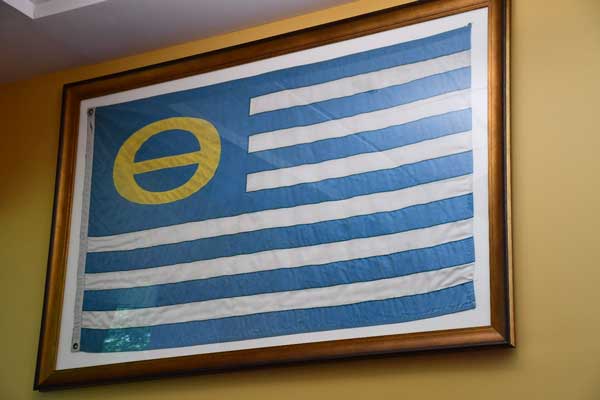Explore the BCC Living Lab, a catalog of environmentally important sites on campus.
Contact Us
Jeremy LaCrosse
jlacross@berkshirecc.edu
Explore the BCC Living Lab, a catalog of environmentally important sites on campus.
Jeremy LaCrosse
jlacross@berkshirecc.edu
Vernal pools are seasonal bodies of water that typically fill during the wet seasons but typically run dry as they rely on rain, meltwater and ground water as their water source. These pools are crucial for the breeding cycles of many amphibians as many of the predators (fish) that would normally endanger their young in a traditional pond or lake cannot survive in a vernal pool.
One common threat to vernal pool ecosystems is development near the pool. These pools rely heavily on runoff from nearby lands and changes to the hydrology (the general flow of water above and below the ground) of the area can have dramatic impact on the health of the pool. Most states offer some level of protection for these areas.
For more information, visit Mass Gov.
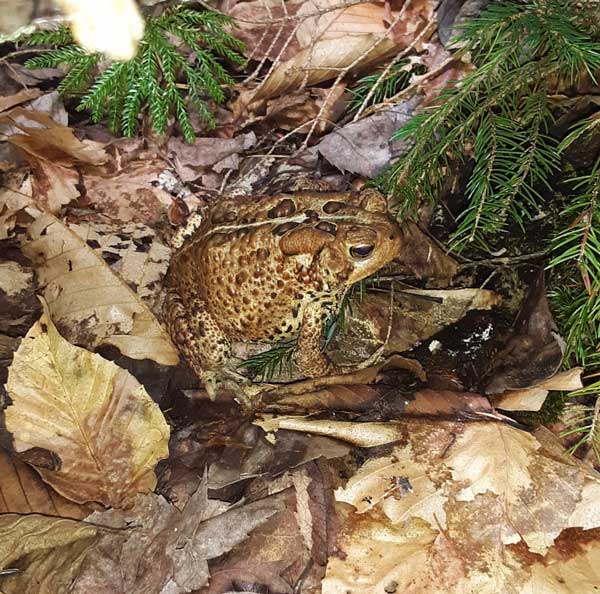
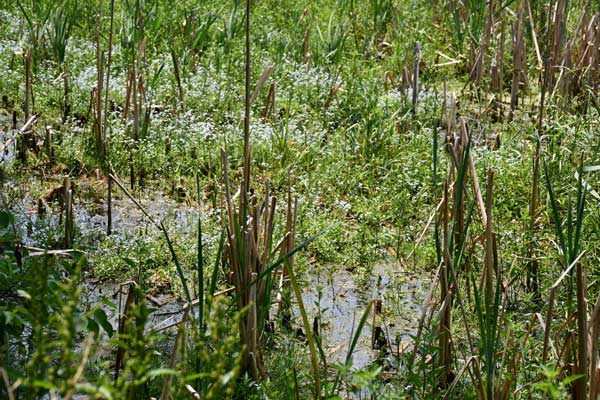
This pond was artificially created by the Environmental Science faculty when the college moved to the West Street site in the late 1960s. The basin was excavated and a nearby stream was diverted to feed the pond. The pond supported a curriculum that included canoeing, hunting, and fishing. While the field of Environmental Science has evolved away from these areas, we can still enjoy the pond today as a habitat for wildlife such as wild birds, beavers, fish, aquatic insects, and amphibians.
You will also see the hallmarks of beaver (Castor canadensis) activity in this area. The beavers have built a dam to flood the area further which protects their lodge (the mound of sticks in the pond) from predators. The pond is surrounded by stumps from beaver-felled trees that appear as short spears rising out of the ground. Pictured here is a larger tree that the beaver is hard at work on.
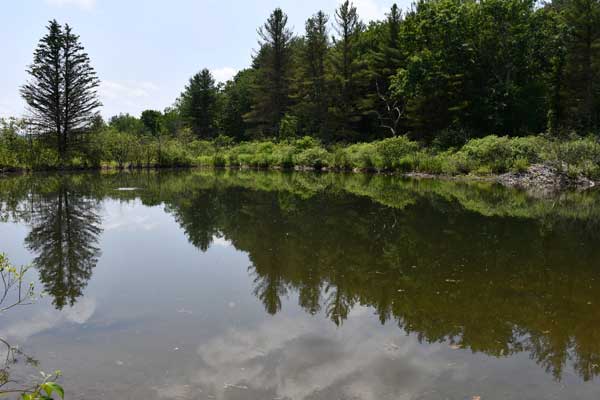
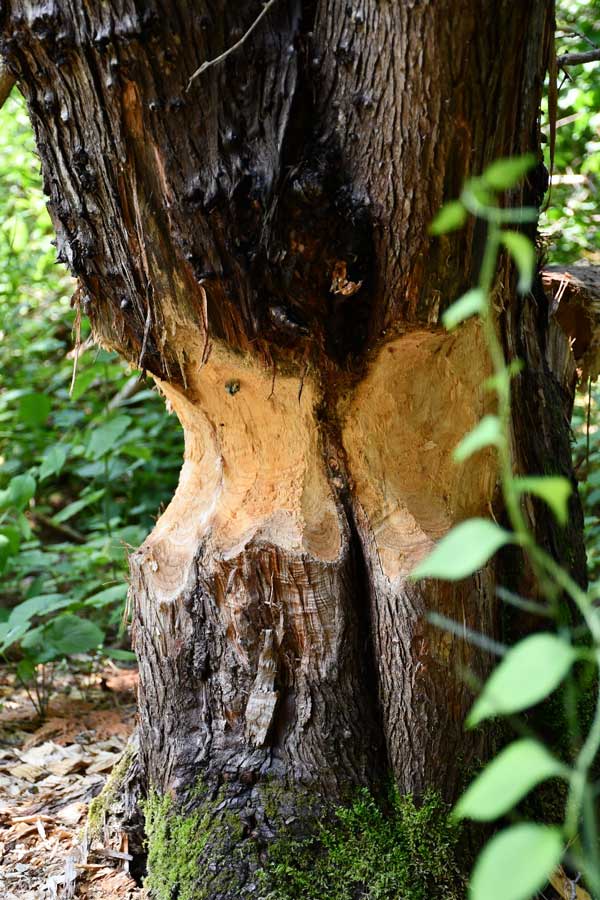
The vegetation here is a mix of Cattails (Typha latifolia) and Phragmites (Phragmites australis), locked in a struggle for control of this wetland. Phragmites and Cattails both thrive in the same ecological communities; wetlands and high moisture soils. Hence, their competition for space, sun, and nutrients. As an exotic invasive species, Phragmites pose a threat to our local wetland wildlife because they over populate and create densely packed vegetation, choking out other species. Cattails play an important role in filtering groundwater (water that flows beneath the Earth's surface) a process that is disturbed by Phragmites invasion. The Cattails here help to filter the runoff from the many paved areas above them.
The names of these plants are both descriptive. Cattails have a distinctive tuft of seeds at the top that resemble the tail of a cat. Phragmites derives from the Greek word for "fence" which should be no surprise to anyone who sees an established stand of these plants.
Cattails are a threatened species in Massachusetts. Visit Mass Gov to read more about Cattails (PDF).
Phragmites (also called "Common Reed") is considered an invasive species that is difficult to remove once established.
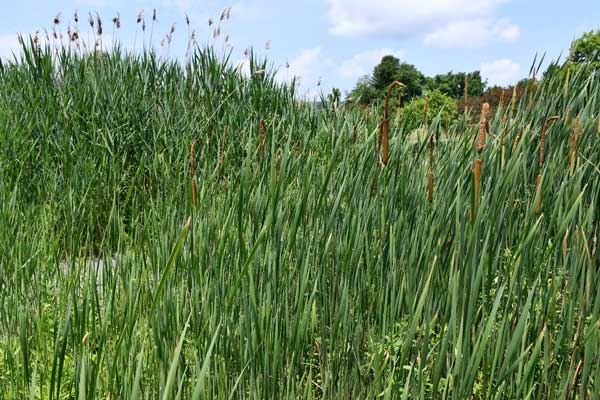
Our sun, a brilliant ball of burning gasses, sends energy across almost 93 million of miles of space to the Earth. This sunlight warms our planet and fuels processes like photosynthesis which allows plants to grow and convert carbon dioxide into oxygen, providing the food that we all other animals on Earth need.
Humans derive some direct benefits from sunlight as well. The absorption of UV B radiation through the skin allows the body to generate vitamin D which is crucial for strong, healthy bones.
In this picture, you can see another way that humans directly benefit from the sun. Solar technology allows us to capture the energy from the sun's rays and convert it into electricity. BCC has this demonstration array of panels in front of you, but the real show is on the roofs of the buildings where hundreds of panels produce clean, renewable energy every day to partially power the college. You may have seen some of these panels from the second floor windows of the Field Building.

This device is used in the process of measuring levels of the bacterium Escherichia coli (E. coli) in streams, ponds, and lakes in Berkshire County. High levels of E. coli are a sign that a body of water may be contaminated with fecal matter. This bacterium lives in the lower digestive tract of mammals and birds, so if there are high levels of E. coli in your water, that means somebody (birds and/or mammals, including humans) has been pooping in your water. Although E. coli themselves are not pathogenic (which is good, because they live in our body), some other fecal contaminants are pathogenic (disease causing). The E. coli are an indicator or a red flag.
This device is actually similar to a kitchen or grocery store shrink-wrap machine. It is used to seal water samples so that they can be incubated and then evaluated for E. coli.
Note: There are some rare strains of E. coli that are pathogenic, and these can be responsible for recalls of some food products.
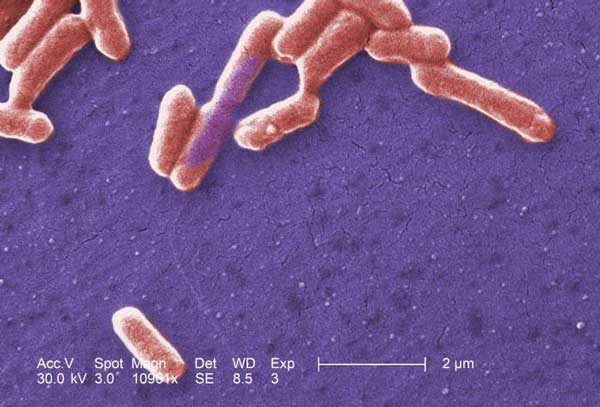
When you throw something in the trash, where does it go? The answer depends on which bin you place it in. Here at BCC, we have 4 bins for sorting waste: Compost, Paper, Bottles/Cans and Trash. The first three bins divert certain types of waste into pathways where they can be reused or recycled into other usable goods. The last bin, Trash, currently goes to a transfer station (formerly an incineration site on Hubbard Avenue in Pittsfield), and then on to a landfill.
One common threat to vernal pool ecosystems is development near the pool. These pools rely heavily on runoff from nearby lands and changes to the hydrology (the general flow of water above and below the ground) of the area can have dramatic impact on the health of the pool. Most states offer some level of protection for these areas.
Over the past several years, BCC has worked hard to divert as much waste away from this last Trash stream and into the other streams. BCC participates in the "Campus Race to Zero Waste," a national competition where colleges across the country track their waste output. BCC has placed very well in the competition, frequently coming in number 1 in the state of Massachusetts and top 10 in the country.
A special thanks to the BCC Green Team and the college Maintainers who have done an incredible amount of work in this area.
Read more information on Trash and Recycling Rates in Massachusetts.

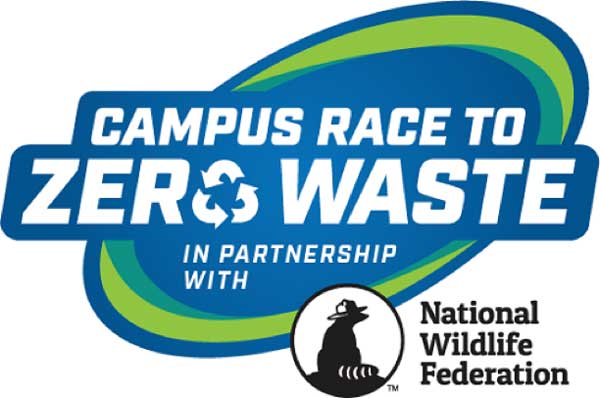
The honeycomb recesses of most of the buildings on campus provide excellent nesting habitat for Cliff Swallows (Petrochelidon pyrrhonota). While these birds normally nest on the faces of rocky cliffs, they have adapted to using human structures such as bridges and buildings.
You may be able to see some of the gourd-shaped nests from years past. These birds construct the nests using mud, grasses, and twigs from the nearby area.
The muddy wallow pit behind you was constructed by a BCC staff member in order to facilitate nest building for these protected animals.
As a migratory bird, these swallows (and their nests) are protected by the Migratory Bird Treaty Act of 1918. This law prohibits the capture, possession, or sale of these birds as well as the destruction of their nests without a permit. More information about this act can be found at the US Fisheries and Wildlife site.
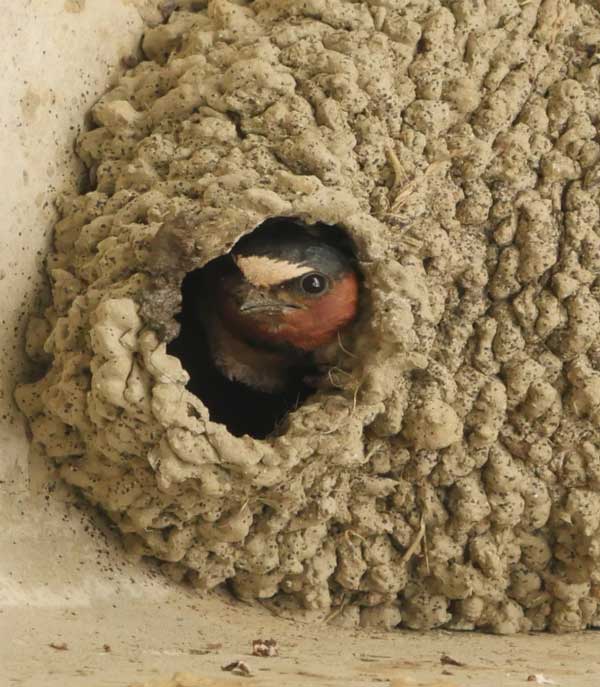
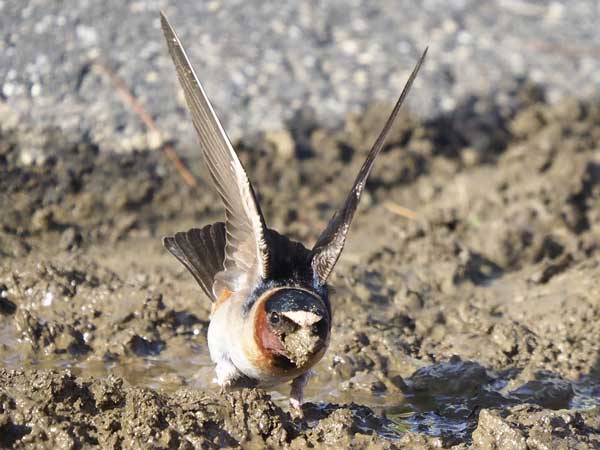
Pronounced "Like-inns" these are a combination of both fungus and algae (and sometimes cyanobactera) species living in close cooperation with each other. Able to live on bark, solid rock, or other impervious areas, lichens are considered one of the most important organisms that help produce soil, upon which everything else needs to survive. In most urban areas, lichens are not able to survive since they are very sensitive to air pollution, particularly Sulphur and Nitrous Oxides.
After the glaciers retreated from the Berkshires about 20,000 years ago there was nothing left behind except rocks, pebbles, and water. It was lichens that first set foot on the region and began the long process of producing soil, followed by an incredible change over time (succession) that began with mosses, followed by grasses and sedges, moving on to small shrubs, and finally to trees. Native Americans began to utilize the Berkshires about 10,000 years ago when mature forests, wetlands, and the wildlife that lived here were enough to sustain human populations.
In general, naturalists identify three basic growth forms of different lichen species — Crustose [living flat like a skin, or crust), Foliose (very leafy and splaying out, like those on our tree trunks)], and Fruticose (tall-ish, branching). Other growth forms have been identified. There are about 450 different "species" of lichens that survive in New England. Lichens are long-lived organisms and very slow growing. Measurements of them can be used to estimate their ages.
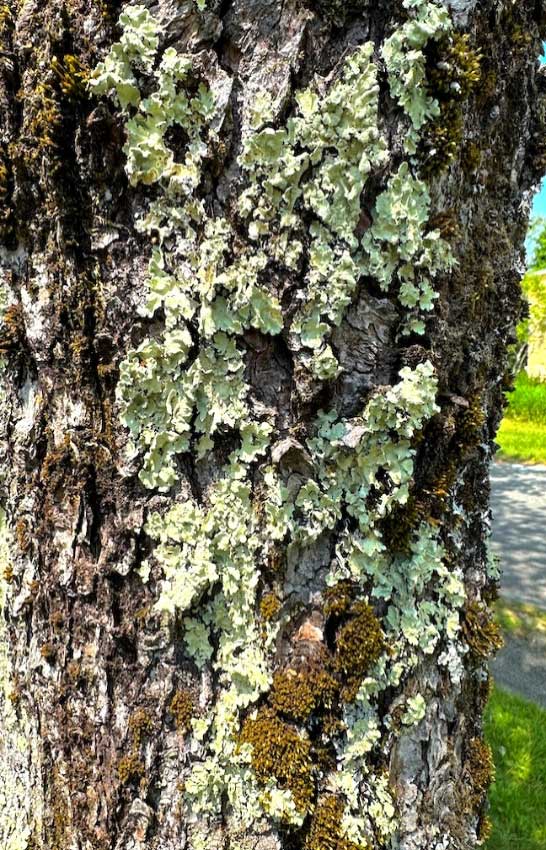
Who would've thunk it... Over 200 different species of bird nest in New England and Berkshire county hosts most of them. You have some nesting in and around your house, whether you live downtown, in the forests, or somewhere in between. There are basically three ways that birds make a home for their eggs:
Called cupped nests, there are so many in this last group, that there is a fabulous and interesting variety of them that can be catalogued. Vireos dangle their nests from their rims, hummingbirds use spider webs and lichens to tie theirs on the top of a small branch. Cliff swallows make pottery and put them under the eaves of buildings or bridges. Warblers put their nests in the forks of sapling tree branches. And it goes on and on.
Several cupped nest builders go to the effort of building a complex nest — inside a cavity, which can either be a natural place, or human-built. Some in this group of birds have seen a decline in population over the past century as we have decreased natural cavities from the landscape (as in removing dead and dying trees, cutting forests in general). Some of these birds have accepted our constructions, if built properly, and BCC's upper meadow are filled with great examples. At least five species of birds build cupped nests and put them inside the houses, including Tree Swallows, Eastern Bluebirds, Chickadees, Tufted Titmouse, and House Wren. Enjoy them from mid-April to mid-October.
Students in several BCC Environmental classes take on the task of cleaning these in early and again in late winter. Without this maintenance, the birds will stop using the boxes and we'd lose biodiversity here on campus. In addition, the upland meadow where all the boxes are must be mowed to keep it from succeeding into forest. BCC facility staff now mow this 70-acre field in a regular, 1/3 section per year. This increases plant growth which is good for the birds and all the insects and seeds they eat as well as for the insects and the plants they pollinate.
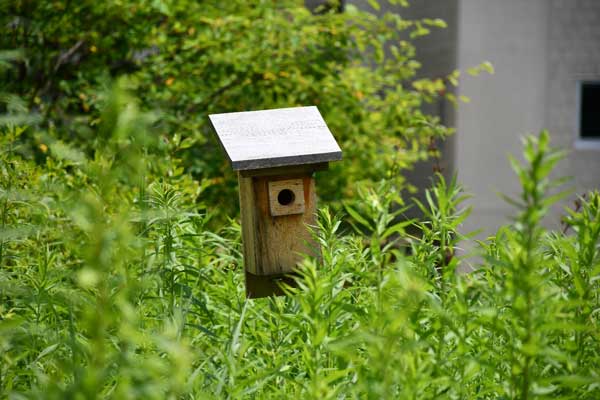
Since the first Earth Day in 1970, BCC, along with citizens around the world, highlighted the need for conservation of all natural resources. The BCC Ecology Flag represents an awareness of not only that first day of celebration, but every day. The Ecology Flag is raised and lowered twice each day by Facilities and/or Security staff.
In 2017 the US Government announced we would leave the Paris Climate Accord, one of the strongest international statements to begin to curb Climate Change. While support for conservation had waxed and waned for decades, this presidential decision was a major loss and the Ecology Flag at BCC was dropped to half-mast, signaling our dismay at the loss of commitment. With the new Administration in 2021, one of the very first statements that was made was that we would re-join the Pairs accord. The flag was about to return to its full status, except...
...that first flag, having whipped about for 50 years, was a bit ragged and faded. BCC purchased a new one and it is what shines each day at the entrance to the campus. The original flag, though, was not discarded. It has been framed and now hangs inside the Hoffmann Environmental Center!

